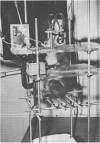Abstract
Monkeys were trained to release a telegraph key at the onset of a pure tone. Latency of the response was measured over a 70-db range of sound pressure (re 0.0002 dyn/cm2) at six frequencies (250 to 15,000 cps). Latency was found to be an inverse exponential function of intensity at all frequencies. Equal loudness was inferred from the equal latency contours which were constructed from the latency-intensity functions at each frequency. These data indicate peak auditory sensitivity for the monkey near 1000 cps. At the frequencies above and below 1000 cps consistently more sound energy was required for equal latency.
Full text
PDF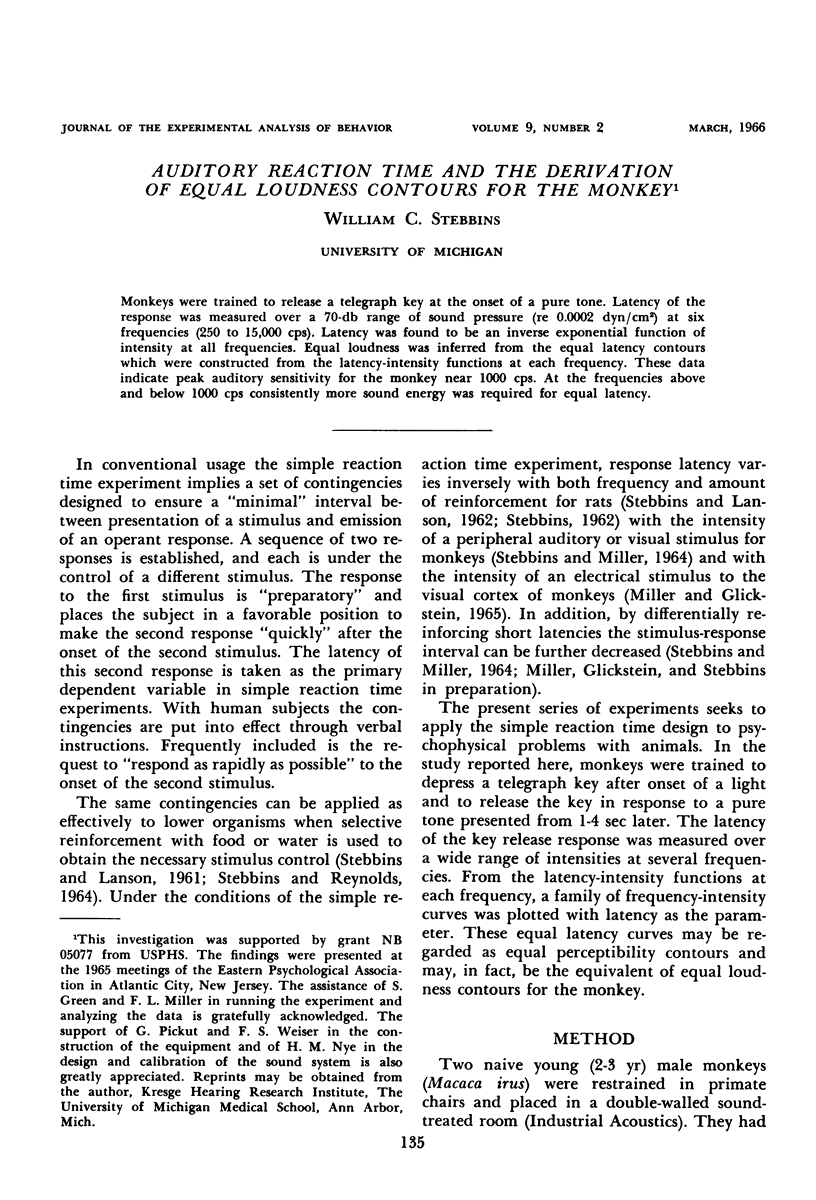

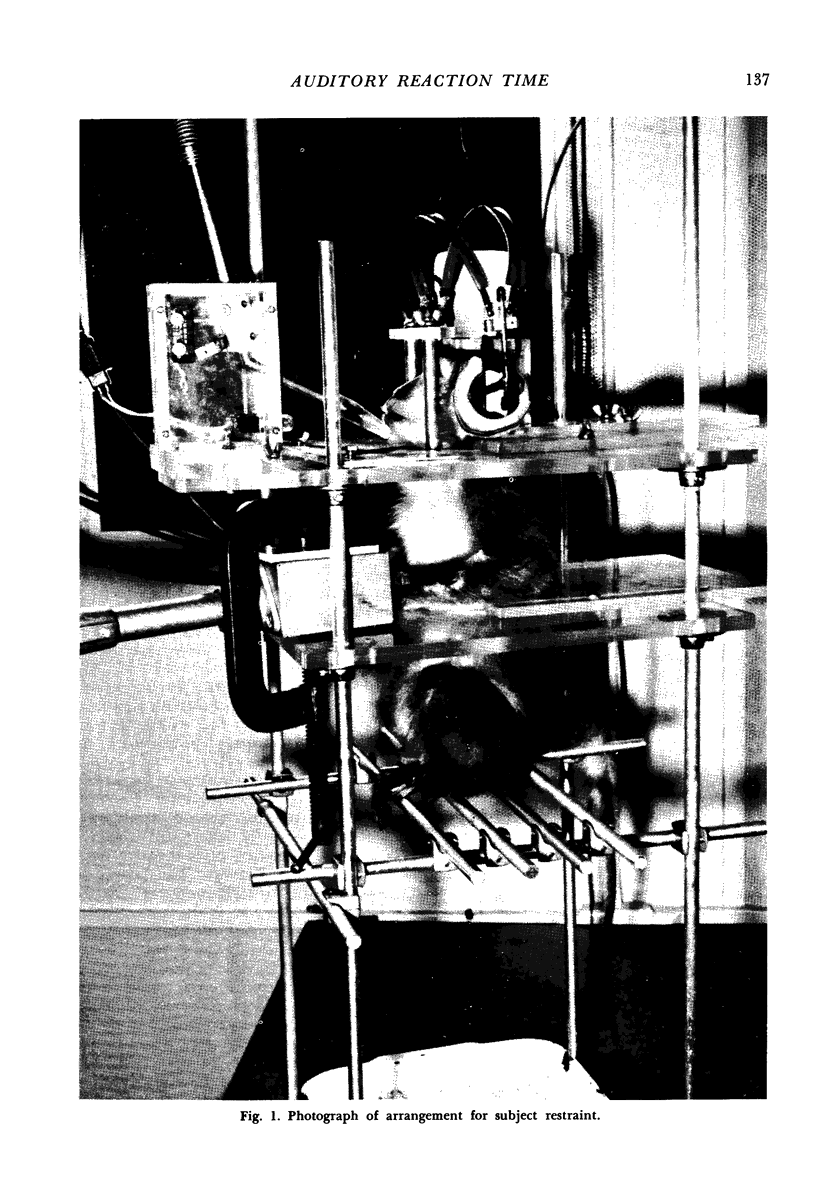
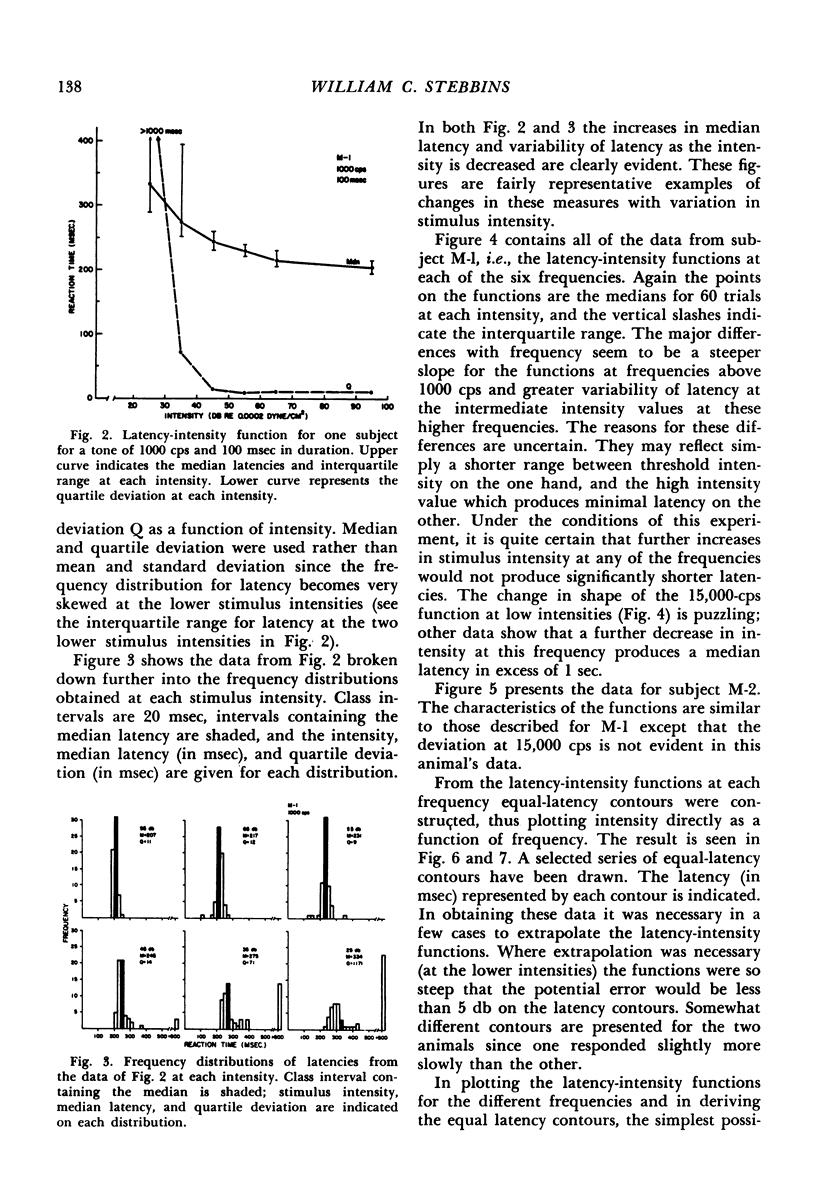
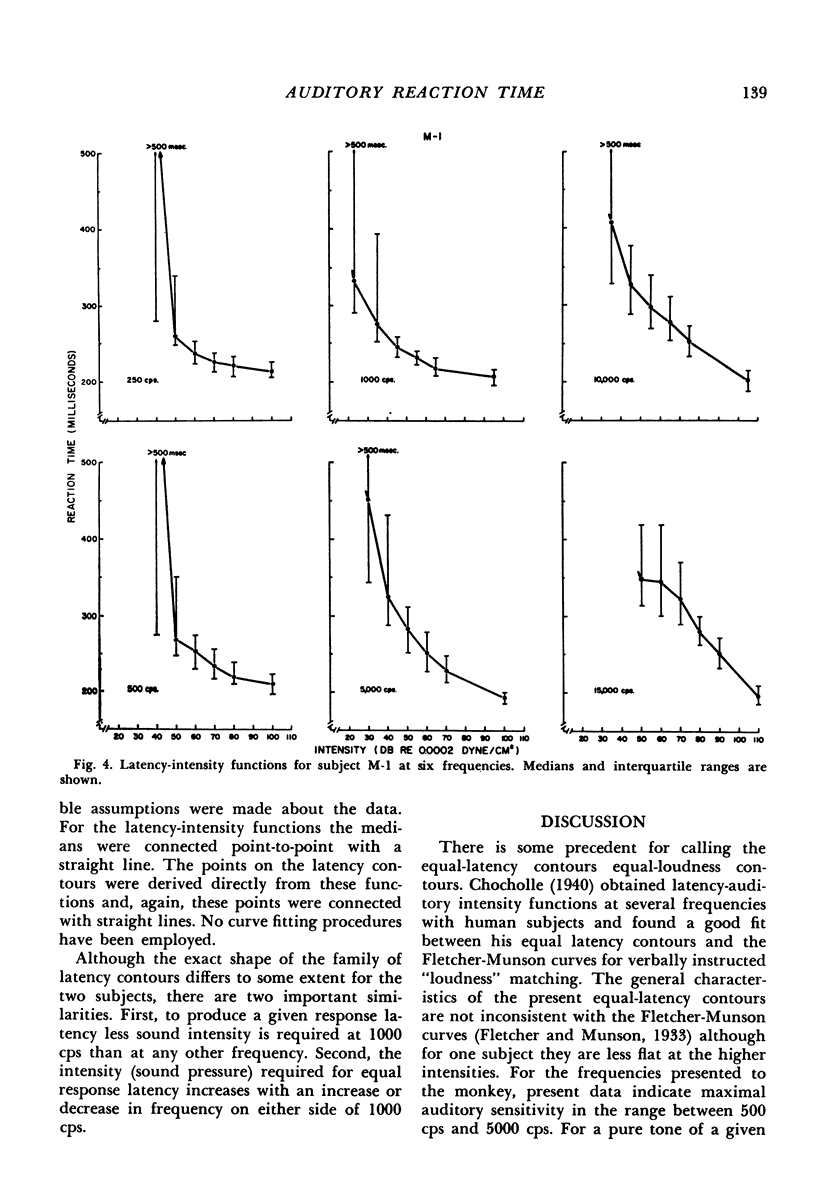
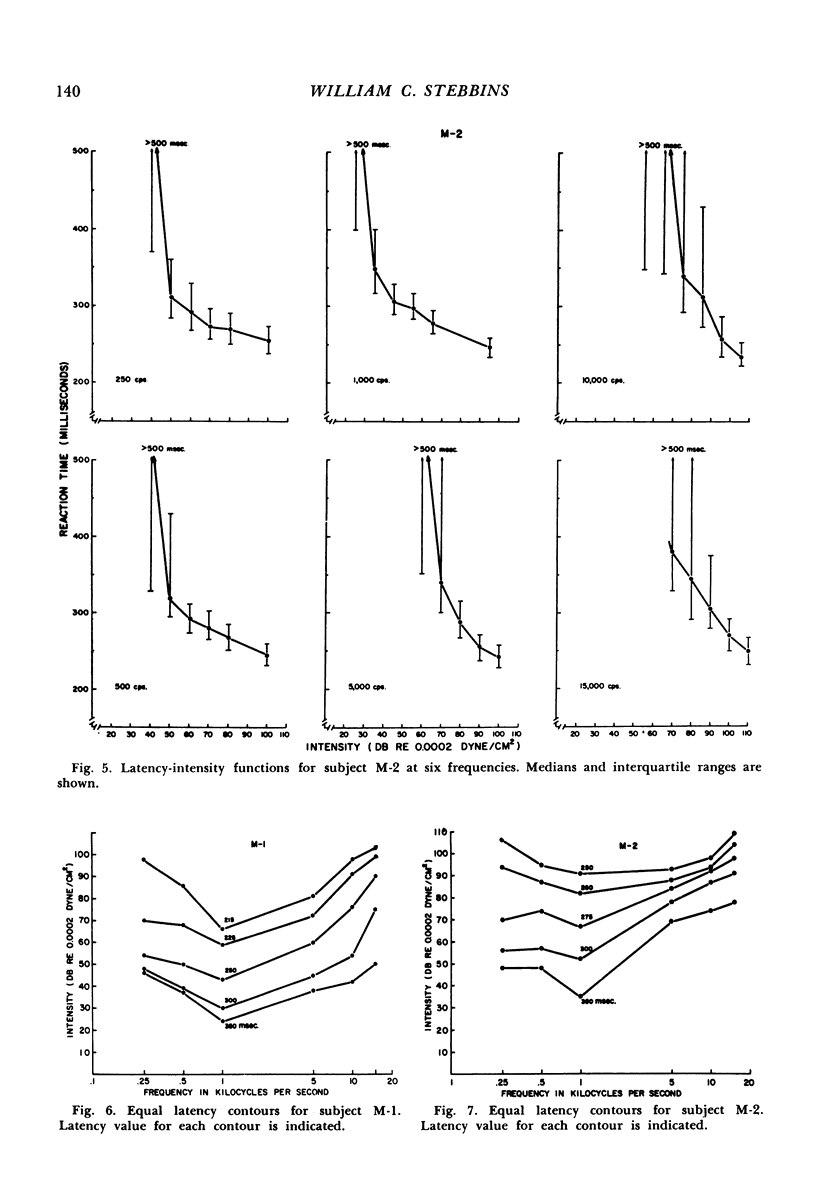
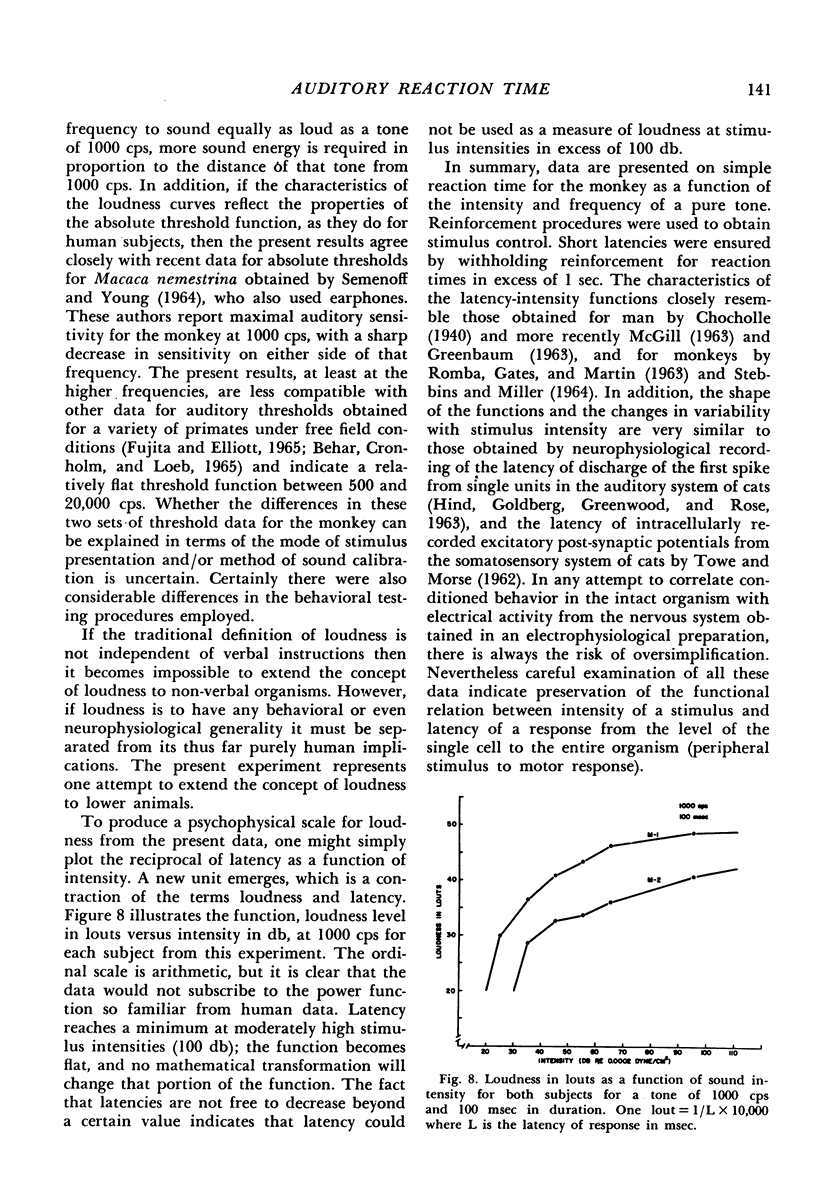
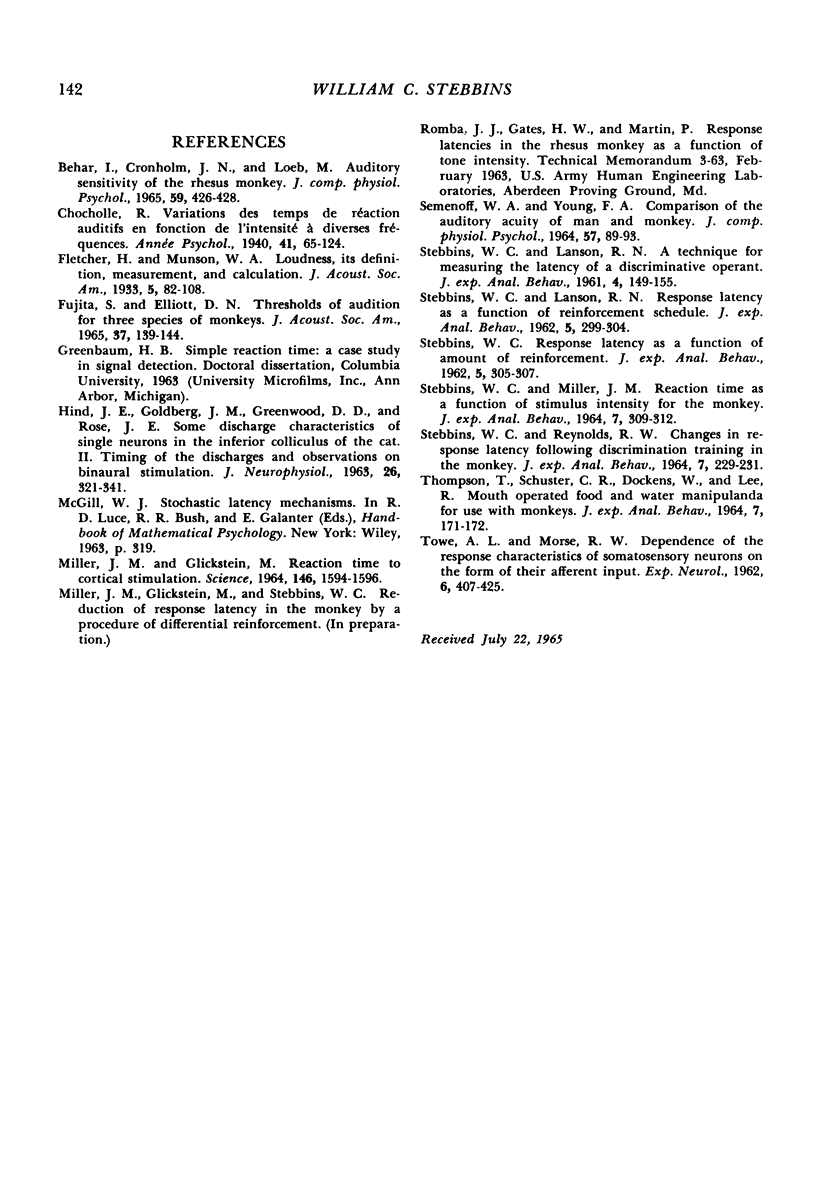
Images in this article
Selected References
These references are in PubMed. This may not be the complete list of references from this article.
- BEHAR I., CRONHOLM J. N., LOEB M. AUDITORY SENSITIVITY OF THE RHEUSUS MONKEY. J Comp Physiol Psychol. 1965 Jun;59:426–428. doi: 10.1037/h0022047. [DOI] [PubMed] [Google Scholar]
- FUJITA S., ELLIOTT D. N. THRESHOLDS OF AUDITION FOR THREE SPECIES OF MONKEYS. J Acoust Soc Am. 1965 Jan;37:139–144. doi: 10.1121/1.2143403. [DOI] [PubMed] [Google Scholar]
- HIND J. E., GOLDBERG J. M., GREENWOOD D. D., ROSE J. E. Some discharge characteristics of single neurons in the inferior colliculus of the cat. II. Timing of the discharges and observations on binaural stimulation. J Neurophysiol. 1963 Mar;26:321–341. doi: 10.1152/jn.1963.26.2.321. [DOI] [PubMed] [Google Scholar]
- MILLER J., GLICKSTEIN M. REACTION TIME TO CORTICAL STIMULATION. Science. 1964 Dec 18;146(3651):1594–1596. doi: 10.1126/science.146.3651.1594. [DOI] [PubMed] [Google Scholar]
- SEMENOFF W. A., YOUNG F. A. COMPARISON OF THE AUDITORY ACUITY OF MAN AND MONKEY. J Comp Physiol Psychol. 1964 Feb;57:89–93. doi: 10.1037/h0046273. [DOI] [PubMed] [Google Scholar]
- STEBBINS W. C., LANSON R. N. Response latency as a function of reinforcement schedule. J Exp Anal Behav. 1962 Jul;5:299–304. doi: 10.1901/jeab.1962.5-299. [DOI] [PMC free article] [PubMed] [Google Scholar]
- STEBBINS W. C., MILLER J. M. REACTION TIME AS A FUNCTION OF STIMULUS INTENSITY FOR THE MONKEY. J Exp Anal Behav. 1964 Jul;7:309–312. doi: 10.1901/jeab.1964.7-309. [DOI] [PMC free article] [PubMed] [Google Scholar]
- STEBBINS W. C., REYNOLDS R. W. NOTE OF CHANGES IN RESPONSE LATENCY FOLLOWING DISCRIMINATION TRAINING IN THE MONKEY. J Exp Anal Behav. 1964 May;7:229–231. doi: 10.1901/jeab.1964.7-229. [DOI] [PMC free article] [PubMed] [Google Scholar]
- STEBBINS W. C. Response latency as a function of amount of reinforcement. J Exp Anal Behav. 1962 Jul;5:305–307. doi: 10.1901/jeab.1962.5-305. [DOI] [PMC free article] [PubMed] [Google Scholar]
- Stebbins W. C., Lanson R. N. A technique for measuring the latency of a discriminative operant. J Exp Anal Behav. 1961 Apr;4(2):149–155. doi: 10.1901/jeab.1961.4-149. [DOI] [PMC free article] [PubMed] [Google Scholar]
- THOMPSON T., SCHUSTER C. R., DOCKENS W., LEE R. MOUTH-OPERATED FOOD AND WATER MANIPULANDA FOR USE WITH MONKEYS. J Exp Anal Behav. 1964 Mar;7:171–172. doi: 10.1901/jeab.1964.7-171. [DOI] [PMC free article] [PubMed] [Google Scholar]
- TOWE A. L., MORSE R. W. Dependence of the response characteristics of somatosensory neurons on the form of their afferent input. Exp Neurol. 1962 Nov;6:407–425. doi: 10.1016/0014-4886(62)90021-3. [DOI] [PubMed] [Google Scholar]



